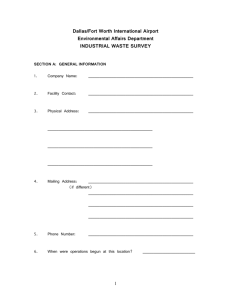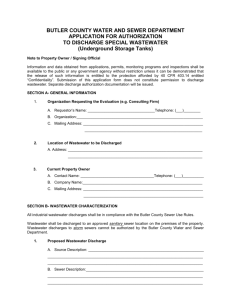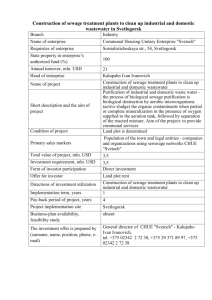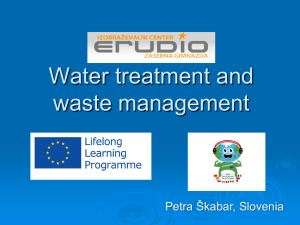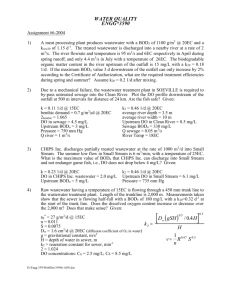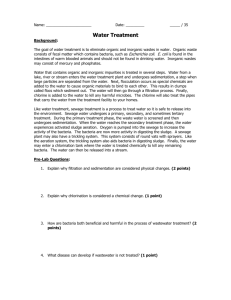Wastewater
advertisement
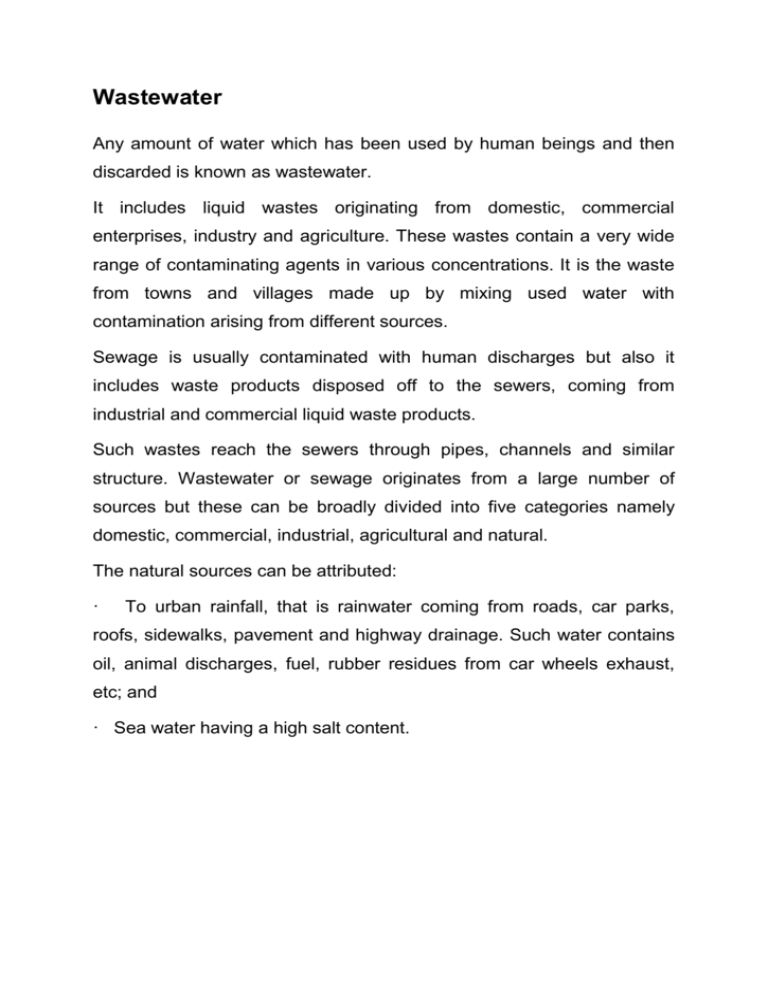
Wastewater Any amount of water which has been used by human beings and then discarded is known as wastewater. It includes liquid wastes originating from domestic, commercial enterprises, industry and agriculture. These wastes contain a very wide range of contaminating agents in various concentrations. It is the waste from towns and villages made up by mixing used water with contamination arising from different sources. Sewage is usually contaminated with human discharges but also it includes waste products disposed off to the sewers, coming from industrial and commercial liquid waste products. Such wastes reach the sewers through pipes, channels and similar structure. Wastewater or sewage originates from a large number of sources but these can be broadly divided into five categories namely domestic, commercial, industrial, agricultural and natural. The natural sources can be attributed: · To urban rainfall, that is rainwater coming from roads, car parks, roofs, sidewalks, pavement and highway drainage. Such water contains oil, animal discharges, fuel, rubber residues from car wheels exhaust, etc; and · Sea water having a high salt content. Domestic waste water comes from lavatories and is usually known as black water. This consists of human wastes which are flushed down through earthenware or plastic pipes to the sewer. Another source of waste from domestic uses is that known as grey water it includes water for personal usage, floor washing and dish washing. This is very soapy and is therefore alkali in nature; this is also passing through the sewer. Rainfall running from roofs and yards is generally clean but may have traces of oil, fuel and soil. Rainwater filtering directly to the sewer is plentiful during the rainy season. Another source is surplus of manufactured liquid including drinks, cooking oil, paint and cleaning liquids. All such liquids are run trough pipes and received in cesspit or septic tank. A septic tank or pit is made of steel or concrete. The latter is preferred. It may be built from bricks and made watertight by paving with cement. Wastewater reaches the tank or pit through a U-gas trap to eliminate obnoxious fumes from reaching inhabitants. The wastewater undergoes bacterial changes where all solid material fall to the bottom in the form of sludge while clear water but only partly purified escapes to the sewer system. Sewage disposal in most urban areas, run of rain water from streets reach the sewer through drains. During high precipitation period a sanitary sewer can overflow forcing an untreated sewage through manholes and flow back into the environment. This causes a very serious problem to public health and is a threat to the surroundings. Sewage with little or no treatment causes a variety of illnesses. Some chemicals present in such waste water can remain a threat for a very long time as these chemicals are absorbed by human and animal tissue. Treatment for reclamation. Wastewater properly and thoroughly treated produce purified water which may be used for all purposes including drinking water. There are several methods which can be used for such treatment. The method used depends on the type and extend of contamination present. Most wastewater is treated by means of large scale industrial plants, known as WWTP (Wastewater Treatment Plants). The actual method consists of several stages and may include physical, chemical and biological process. Wastewater in the Maltese Islands is treated before being dumped in the sea. Most of the wastewater from the households in the south of Malta is directly sent to the Sant Antnin Plant in Marsascala to be treated in the Sewage Treatment Plant. This wastewater is transformed into water good for irrigation. The government provides farmers who have their fields in the south with this water good for irrigation free of charge. Irrigation with this kind of water helped to improve the quality and productivity of agricultural crops in the south. This recycled water is helping the environment since it is not thrown at sea, harming marine life and damaging water quality.


